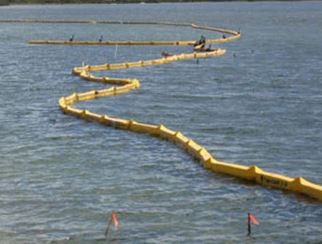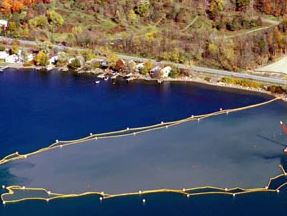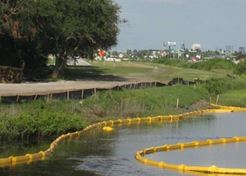Type III -
This configuration should be used in areas with the potential of currents up to 3 knots or 5 feet per second and in areas where wind and waves are present.
Turbidity curtains should extend the entire depth of the waterway whenever the area is not subject to tidal activities or significant wind or wave forces. In tidal or wind and wave activities, the curtain should never be long enough to touch the bottom.
A one-foot gap should be in place between the ballast and the bottom of the skirt which would be during low water. Movement of the lower skirt over the bottom caused by tidal reverses or wind wave activities in the flotation system could fan and stir up settled sediments.
In tidal or wind and wave situations, it's not practical to extend a turbidity curtain depth lower than 10 to 12 feet below the surface, even in deep water. Curtains installed deeper than that will suffer from large loads and stress on the curtain material as well as the mooring system. Also, a curtain installed in this manner can billow up toward the surface under the pressure of the moving water. This will result in an affected depth that is significantly less than the skirt depth.
The turbidity curtains should be placed parallel to the direction of the water's flow.


















